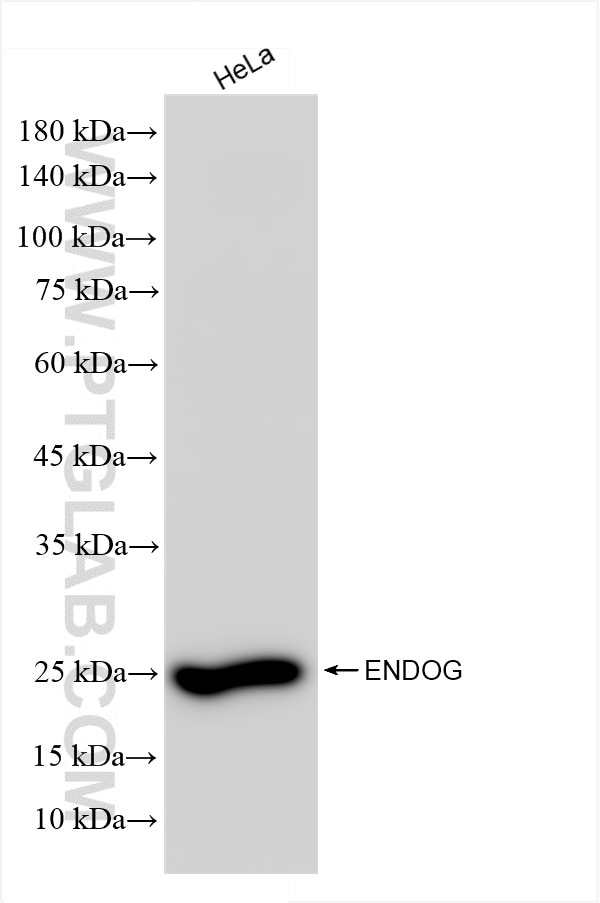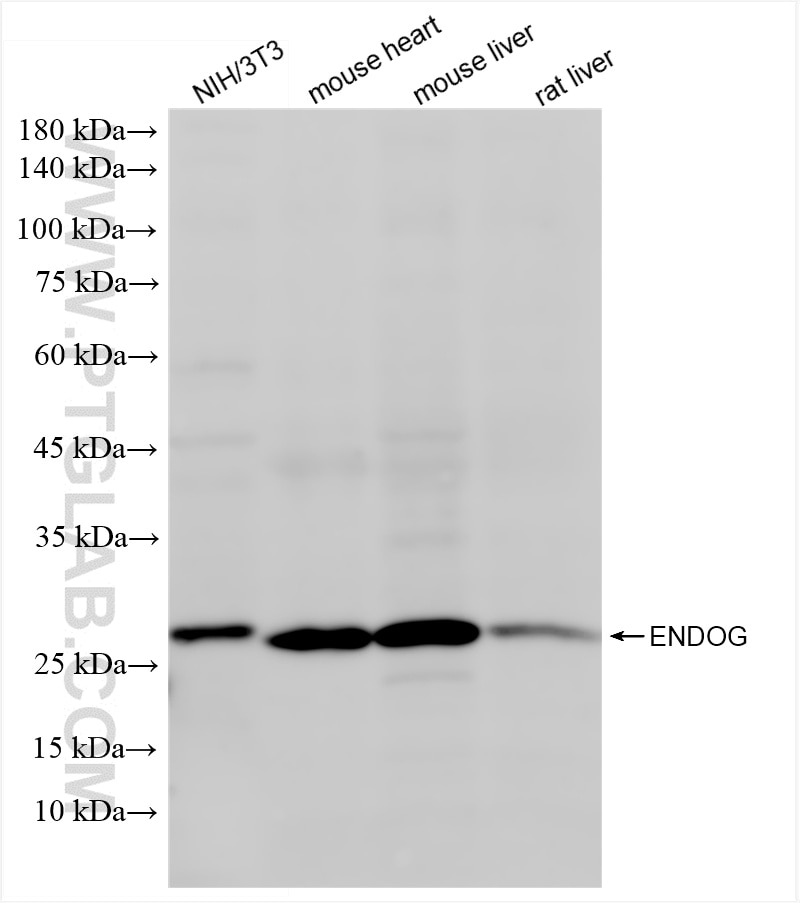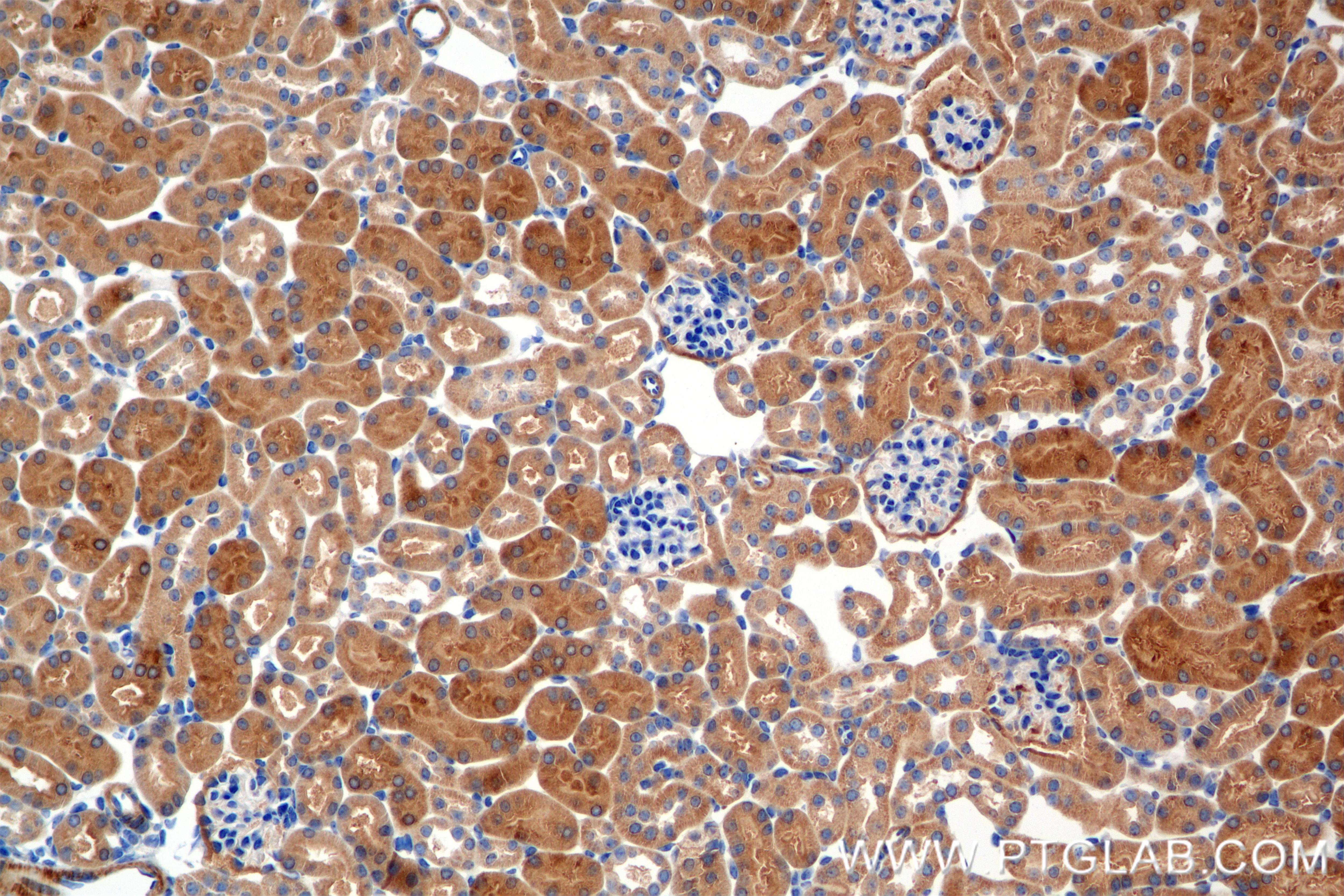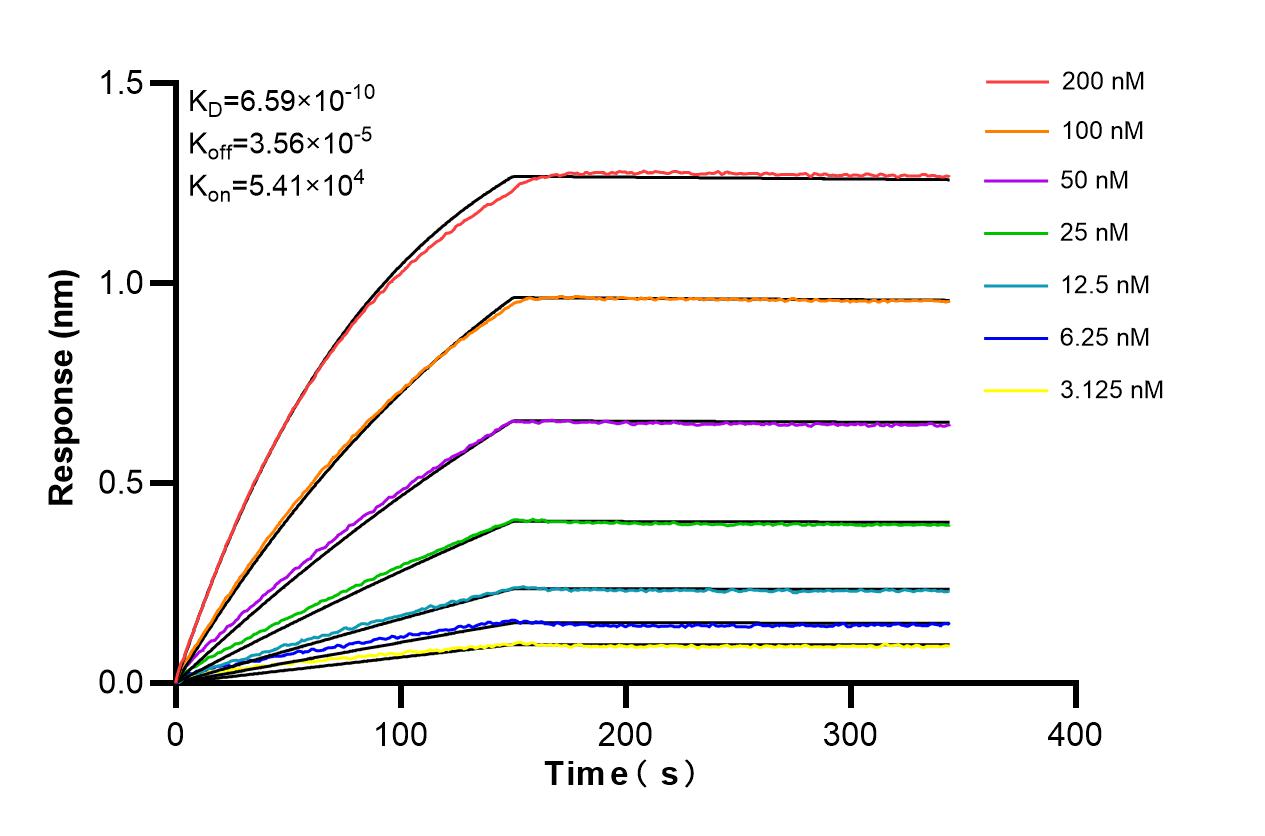Tested Applications
| Positive WB detected in | NIH/3T3 cells, HeLa cells, mouse heart tissue, mouse liver tissue, rat liver tissue |
| Positive IHC detected in | mouse kidney tissue Note: suggested antigen retrieval with TE buffer pH 9.0; (*) Alternatively, antigen retrieval may be performed with citrate buffer pH 6.0 |
Recommended dilution
| Application | Dilution |
|---|---|
| Western Blot (WB) | WB : 1:1000-1:6000 |
| Immunohistochemistry (IHC) | IHC : 1:250-1:1000 |
| It is recommended that this reagent should be titrated in each testing system to obtain optimal results. | |
| Sample-dependent, Check data in validation data gallery. | |
Product Information
86122-1-RR targets ENDOG in WB, IHC, ELISA applications and shows reactivity with human, mouse, rat samples.
| Tested Reactivity | human, mouse, rat |
| Host / Isotype | Rabbit / IgG |
| Class | Recombinant |
| Type | Antibody |
| Immunogen |
CatNo: Ag17739 Product name: Recombinant human ENDOG protein Source: e coli.-derived, PGEX-4T Tag: GST Domain: 63-297 aa of BC016351 Sequence: ELAKYGLPGLAQLKSRESYVLCYDPRTRGALWVVEQLRPERLRGDGDRRECDFREDDSVHAYHRATNADYRGSGFDRGHLAAAANHRWSQKAMDDTFYLSNVAPQVPHLNQNAWNNLEKYSRSLTRSYQNVYVCTGPLFLPRTEADGKSYVKYQVIGKNHVAVPTHFFKVLILEAAGGQIELRTYVMPNAPVDEAIPLERFLVPIESIERASGLLFVPNILARAGSLKAITAGSK Predict reactive species |
| Full Name | endonuclease G |
| Calculated Molecular Weight | 297 aa, 33 kDa |
| Observed Molecular Weight | 25-30 kDa |
| GenBank Accession Number | BC016351 |
| Gene Symbol | ENDOG |
| Gene ID (NCBI) | 2021 |
| Conjugate | Unconjugated |
| Form | Liquid |
| Purification Method | Protein A purification |
| UNIPROT ID | Q14249 |
| Storage Buffer | PBS with 0.02% sodium azide and 50% glycerol, pH 7.3. |
| Storage Conditions | Store at -20°C. Stable for one year after shipment. Aliquoting is unnecessary for -20oC storage. 20ul sizes contain 0.1% BSA. |
Background Information
Endonuclease G, also named as EndoG, is a mitochondrial protein. It's a nuclease which was first characterized in bovine heart mitochondrial extracts. It's involved in many cellular process, including apoptosis, paternal mitochondrial elimination and autophage (PMID:33473107). It is a nuclear encoded, sugar-non-specific (PMID:15066427) and well-conserved nuclease (PMID:17244531). It can be released from the mitochondria and translocated to the nucleus where it induces fragmentation of DNA, leading to apoptosis (PMID:11452314). EndoG is a 297-amino-acid long protein with a molecular weight of 30-35 kDa. There is a homodimer form with MW about 60-70 kDa.
Protocols
| Product Specific Protocols | |
|---|---|
| IHC protocol for ENDOG antibody 86122-1-RR | Download protocol |
| WB protocol for ENDOG antibody 86122-1-RR | Download protocol |
| Standard Protocols | |
|---|---|
| Click here to view our Standard Protocols |










